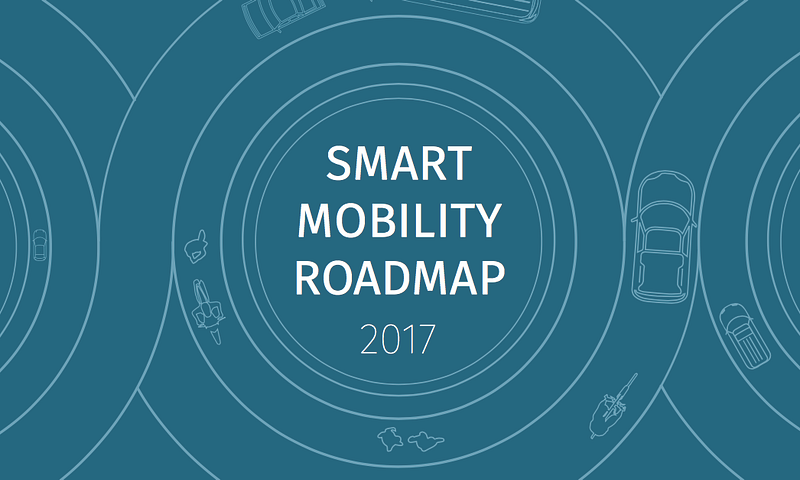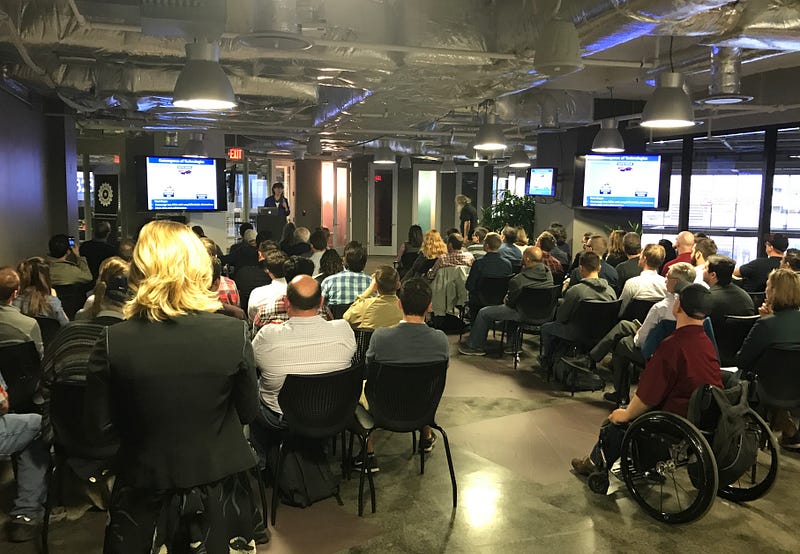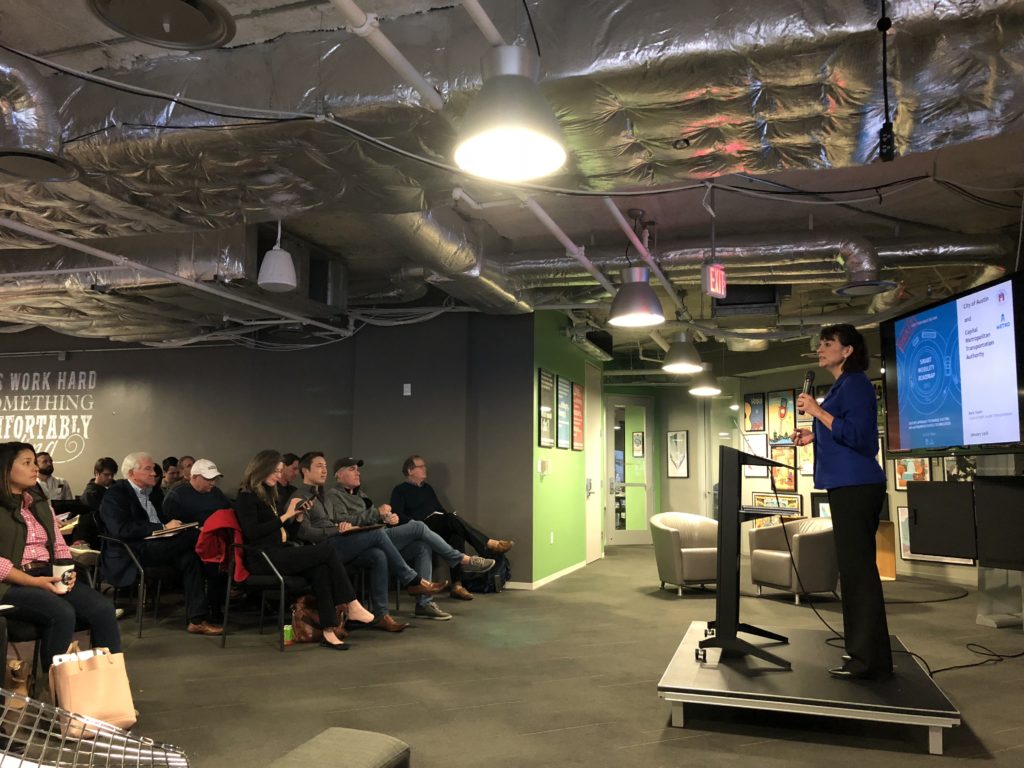On January 9, Austin Tech Alliance hosted Austin’s Smart Mobility Roadmap — a presentation and discussion with Karla Taylor, the chief of staff for Austin Transportation Department.
Karla spoke about the Smart Mobility Roadmap, the recently-released draft report from the City of Austin and CapMetro that examines Austin’s approach to shared, electric, and autonomous vehicle technologies.
Here are three takeaways from the evening’s discussion:
1) Decision makers are working to incorporate the future of mobility into their planning efforts.
The report exists because both Austin City Council and the Capital Metropolitan Transportation Authority (CapMetro) Board of Directors tasked their organizations with strategizing to make Austin a leader in the shared, electric, autonomous mobility future.
The City and CapMetro thus worked together on building a single roadmap. Working together made sense, given that CapMetro is the Austin region’s transit provider, and how the City plans and implements transportation infrastructure impacts CapMetro’s ability to move people from point A to point B.
The final version of the roadmap will be incorporated into the Austin Strategic Mobility Plan, Austin’s city-wide transportation plan that will guide transportation investments for the next decade and beyond.
2) In the short term, shared mobility can have the biggest immediate impact.
Sales projections in 2030 for fully autonomous vehicles (AVs) range from 15 to 50 percent of the market, and research organizations are already examining the potential impact of wide adoption of AVs, including:
- expanded mobility options for all and a resulting increase in vehicle miles traveled;
- an extended adoption period in which AVs will mix with human-driven vehicles; and
- a significant increase in roadway safety.
There are approximately 4,000 electric vehicles (EVs) in the Austin market, and current projections show EV sales overtaking traditional cars in only 20 years, which will require a significant increase in EV charging infrastructure.
Given that a critical mass of fully autonomous, electric vehicles is not immediately around the corner, the Roadmap leans on shared-use mobility as the best current opportunity to improve transportation. Shared-used vehicle technology, after all, is already quite prevalent in Austin, from public transit to ridesharing to bikesharing. But true impact will require behavioral changes — i.e., a willingness to move away from single occupancy vehicle use.

The growth of shared, electric, autonomous mobility options will occur, even if it’s not immediate. From the Roadmap:
“The convergence of shared, electric, and autonomous vehicle services can offer a lower cost, more efficient and accessible, less polluting and less congested transportation system. Wrangling all three of these technologies and services together requires a dedicated effort that focuses on data, governmental policies and incentives, technology applications, testing, and multiple touchpoints with the community.”
3) There’s still a big gap between the public and private sectors as it relates to data and technology.
One of the biggest challenge cities face today in the transportation space is limited data and limited tools to utilize that data in decision-making. The connected cars of tomorrow, however, will produce voluminous amounts of data, and cities will need to collaborate with the private sector on data platforms and data management.

As a result, the roadmap calls for investing in and leveraging technology through open data and public-private data partnerships to optimize mobility options. The Austin Transportation Department in particular is advocating for a “One System” traffic and data management center that is managed in conjunction with other regional transportation partners.
In the question and answer session, Karla pointed out the need to get educated — not pitched — by people with tech expertise that can help to increase the public sector’s knowledge of what’s available and what’s possible.
Have thoughts?
If you’re interested in impacting the final product that will shape Austin’s mobility investments for decades, go to smartmobilityroadmap.civicomment.org to provide feedback.

